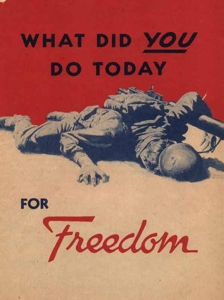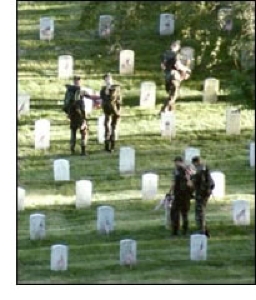Blackfive writes today of a Marine Corps Memorial Service held in Al Asad, Iraq for those from Regimental Combat Team 7 of the First Marine Division where Colonel Craig A. Tucker, USMC spoke from his heart:
We can pay them no greater honor than to paint each of them into our memory and to promise, each in our own way and each to our own thoughts, that we will never forget them. And for as long as any here live, their memorial day will not be the last Monday in May; their memorial is their lives sculpted into the hearts of their friends, a memorial enduring for the generations all of you have left to live, a memorial that comes to life when we speak of them, laugh over their antics, cry over them, talk to our family and friends about them, or sit quietly and feel the pain of their loss to our fellowship.
As for me, I knew few of them personally, but I remember all of their names; I remember the hour and date of their death, I remember how and where they died, I know the names of those they left behind. And for the remainder of my days their memorial will be that remembering: that these young men I counted as my sons have far exceeded the honors of their fathers.
Semper Fi, Marines.

